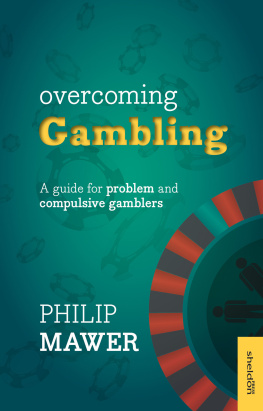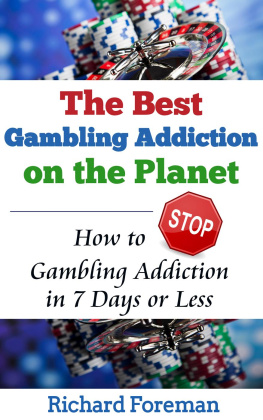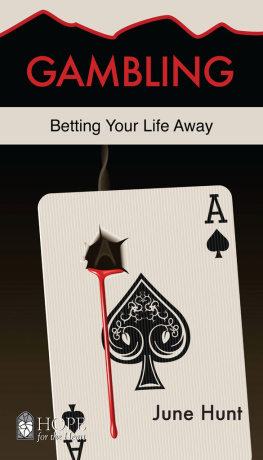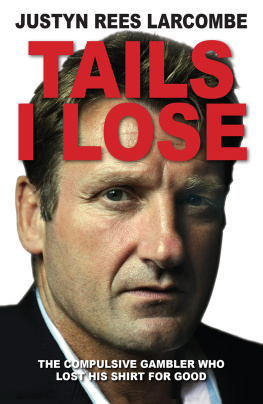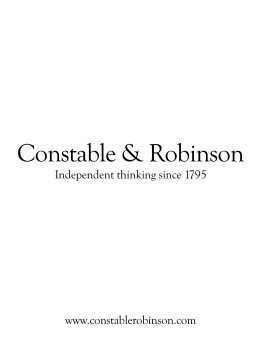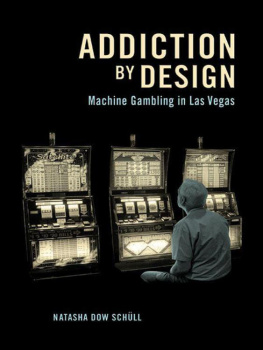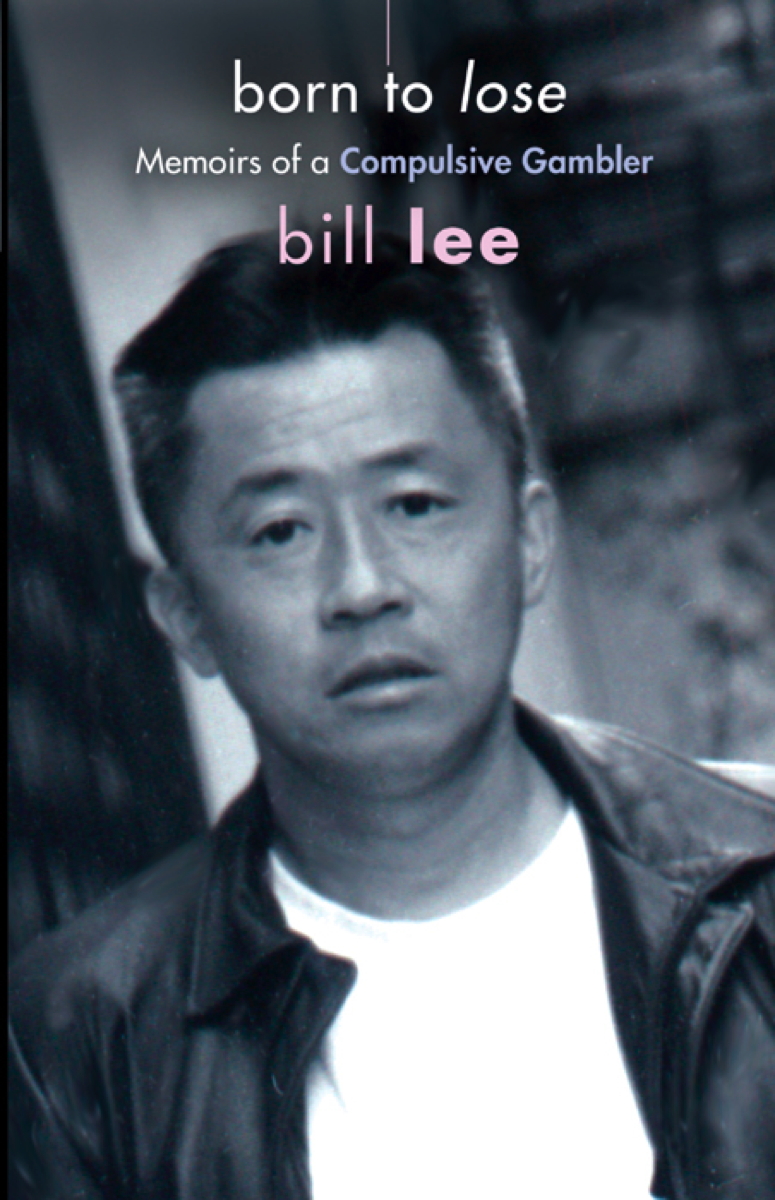BORN TO LOSE
Bill Lee accurately depicts the inner workings of the mind of a pathological gambler. Ultimately, this is a story of hope, recovery, and perseverance in the face of seemingly insurmountable conditions. His memoir is a must-read for patients and families who are struggling with gambling problems as well as for the therapists who treat them.
TIMOTHY W. FONG, M.D.
Co-director, UCLA Gambling Studies Program
Born to Lose skillfully places the reader inside the mind of a compulsive gambler. Any gambler afflicted with this disease will find in these pages a great deal of identification along with guidelines for recovery.
MARY HEINEMAN, C.S.W.
Author, Losing Your Shirt

Also by Bill Lee
Chinese Playground: A Memoir
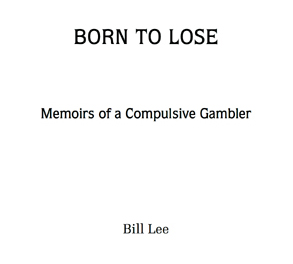

Hazelden Publishing
Center City, Minnesota 55012-0176
800-328-9000
hazelden.org/bookstore
2005 by Hazelden Foundation
All rights reserved. Published 2005
Printed in the United States of America
No portion of this publication may be reproduced in any manner
without the written permission of the publisher
ISBN-13: 978-1-59285-153-9
Ebook ISBN: 978-1-61649-134-5
Library of Congress Cataloging-in-Publication Data
Lee, Bill, 1954
Born to lose : memoirs of a compulsive gambler / Bill Lee.
p. cm.
ISBN 1-59285-153-3 (softcover)
1. Lee, Bill, 1954 2. GamblersUnited StatesBiography.
I.Title.
HV6710.3.L44A3 2005
362.25dc22
[B]
2004060943
Authors note
To preserve the anonymity both in and outside of Gamblers Anonymous (GA), names, dates, and minor details of some stories have been altered. With the exception of ESL, the company names of former employers are fictitious. Identities and some characteristics of managers and co-workers have been modified. Timelines of certain events have also been changed.
Cover design by David Spohn
Cover photo by Vivian Young
Typesetting by Stanton Publication Services, Inc.
As always, for
ERIC
In memory of
E. WALLACE
CONTENTS
Appendix B: Directives from the
GA Combo Book
PREFACE
This story details my gambling addiction, which spans more than forty years and includes my fifteen-year involvement with Gamblers Anonymous (GA). To share my gambling history in detail, I thought it was important to open the doors to GA so the public can gain a better insight not only into this treacherous addiction but also into the transformation that occurs in recovery.
Compulsive gambling is often referred to as the hidden and invisible disease, because problem gamblers like myself dont show overt physical symptoms. As a GA member stated eloquently, You dont smell cards on our breaths.
Here are some startling statistics that I came across while working on the manuscript. After you read my story, you can decide for yourself whether my lifelong struggle with gambling validates someor perhaps mostof the data.
The National Council on Problem Gambling estimates that compulsive gamblers annually cost American businesses $40 billion in lost wages and insurance claims.
The American Insurance Institute estimates that 40 percent of all white-collar crime is committed by or for compulsive gamblers.
Two of every three compulsive gamblers say they would commit a crime to cover gambling debts and/or to obtain money with which to gamble.
A third of all prison inmates are considered compulsive gamblers.
One of every five compulsive gamblers attempts suicide.
One in four compulsive gamblers is involved in a traffic accident on the way to a gambling episode, and half admit they regularly speed on their way to a gambling episode.
Participation in gambling among teenagers is growing three times as fast as among adults.
Antidepressant medications, which are commonly prescribed to curb gambling urges, can actually pose a significant risk for triggering mania, including gamblingespecially if the individual suffers from manic depression, also known as bipolar disorder.
The dropout rate for Gamblers Anonymous is over 90 percent.
The 1999 National Gambling Impact Study Commission to Congress Report estimates that there are more than 20 million pathological and problem gamblers in the United States. Considering that for every compulsive gambler, five others are affected by the addiction, more than 100 million people are impacted by gambling issues in the United States.
ACKNOWLEDGMENTS
First and foremost, I want to thank Dr. Lawrence Lanes and Dr. Elior Vas for their kindness and compassion. Also, Dr. Tricia Gibbs and Dr. Richard Gibbs, along with their wonderful staff, for their generosity and great care. In addition to my son, Eric, Im blessed to have great friends who were there for me when times were dark and morbid. They include Wesley Leung, Miles Guyton, John Chang, Norm Burgos, Carol Liu, Amy Kroll, Thai Nguyen, and Liora Blinderman. Im grateful to Karen Chernyaev and Kate Kjorlien at Hazelden and to Anne Running Sovik for their editing prowess. I also want to thank literary agent Susan Rabiner for her insight and guidance.
The devil invented gambling.
SAINT AUGUSTINE
PART ONE

MY DRUG OF CHOICE
ONE

HOME GROUP
I could barely keep my eyes open as I gently shook the tiny handbell at 8:03 P.M. to officially start the meeting. I had just returned home to San Francisco from a business trip, catching back-to-back red-eye flights and debriefing my client in Silicon Valley for most of the day. The rain outside was coming down in buckets, with pellets of hail crashing against the churchs ornate windows. As members continued trampling in with their umbrellas and raincoats dripping on the carpet, I shook my head, recalling that we recently paid the pastor to have it professionally cleaned. I rang the bell a little louder to tone down the laughter coming from the back of the room. Something in my gut told me thatfor better or for worsethis was not going to be a dull meeting. After all, this was my home group.
The small, yellow combo books that serve as the cornerstone of our recovery program were neatly laid out in front of each chair on the long conference table, and the strong aroma of coffee from the kitchen filled the air of the warm, dimly lit library. In spite of the winter storm, it looked as though we were going to have a full house. So far, I counted twenty-two heads. We would have to bring in more chairs.
As secretary of the San Francisco Friday night Gamblers Anonymous (GA) meeting, I jot down each persons first name and last initial in our official notebook as they enter the room. Our profile is more or less representative of a GA group in a culturally rich metropolitan area. On this particular evening, we had eighteen Caucasians (as far as I could tell), two Asians, one Latino, and one African American. There were nineteen males and three females. The youngest member looked to be in his midtwenties, and the oldest had just turned seventy-eight. Among gambling addicts, men outnumber women approximately five to one. Also, women tend to be closet gamblers, start gambling later in life, and have a higher incidence of dual addictions. Only 2 to 4 percent of the women in GA attend meetings regularly, so my home groups above-average female membership is something I am truly proud of.



